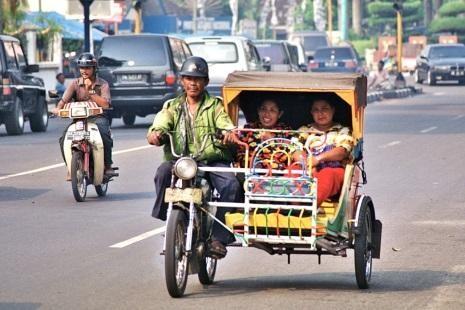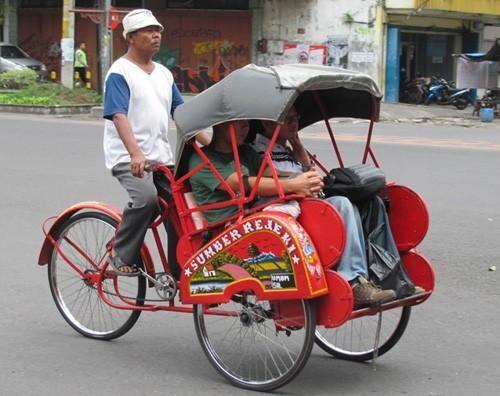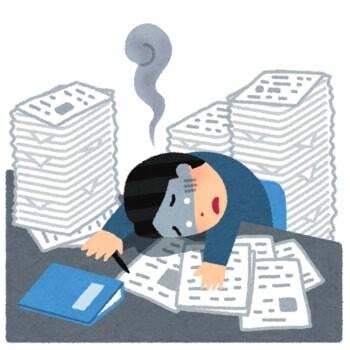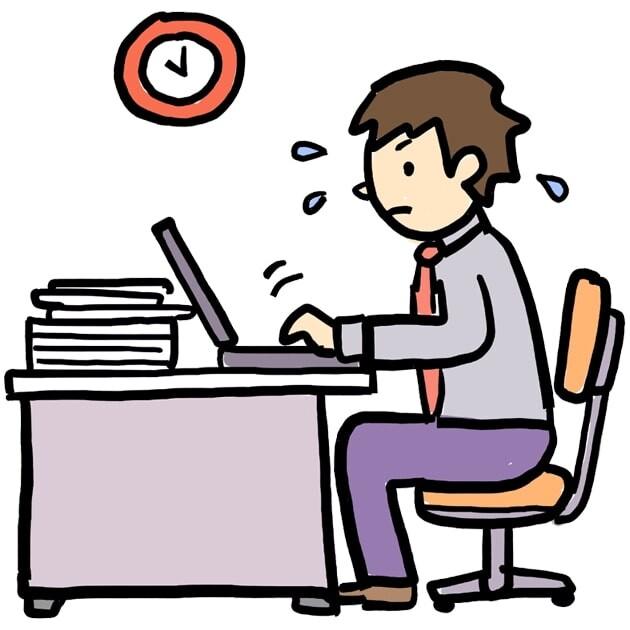モロッコから日本に永住して気づいたこと、驚いたこと。日本はすばらしい、逆カルチャーショックも!
ラマダン断食は身体にもメンタルにも利点がある?!
Hi! I’m Yassine, a language teacher from Morocco.
Morocco is an Islamic country approximately 99% of the country are Muslims.
こんにちは!北アフリカ、モロッコ出身、語学講師のヤシンです。モロッコは、国民の99%がイスラム教徒の国です。
In this article we’re going to talk about the forth pillar of Islam which is Sawm or Fasting of Ramadan, which is at this very moment for this year.
今回は、イスラム教の4つ目の柱である、Sawm=ラマダン断食(今現在ラマダン中)についてご紹介します。
Ramadan (ラマダン) is the ninth month of the Islamic Calendar , and is observed by Muslims-worldwide as a month of fasting. This annual observance is regarded as one of the Five Pillars of Islam. The month lasts 29–30 days based on the The visual sightings of the crescent moon.
ラマダンとは、イスラム暦では9ヶ月目を意味し、世界中のイスラム教徒の間では、断食の月とされています。 毎年恒例のこの儀式は、イスラム教の5つの柱の1つとされています。断食月は、三日月の見え方により、29-30日間続きます。
Fasting is obligatory for adult Muslims, except those who are suffering from an illness, traveling, are elderly, pregnant, breastfeeding, diabetic or going through menstrual bleeding.
断食は、成人のイスラム教徒には義務付けられていますが、病気の人、旅行中の人、老人、妊婦、授乳中の人、糖尿病の人、月経中の人は免除されています。
How do Muslims fast?
ではどんな断食をするのでしょうか?
While fasting from dawn until sunset, Muslims refrain from consuming food, drinking liquids, smoking, and engaging in sexual relations. Muslims are also instructed to refrain from sinful behavior that may negate the reward of fasting, such as false speech (insulting, backbiting, cursing, lying, etc.) and fighting. Food and drink is served daily, before dawn and after sunset.
日の出から日の入りまで断食しますが、その間は、食べ物、飲み物は一切摂らず、喫煙、性交もしません。また、次のような罪深い行動は断食の報いを無効にしてしまうとして、しないようにしています。侮辱、陰口、罵り、嘘や喧嘩。
そして日の入り後から、翌日の日の出まで、食べたり、飲んだりすることができます。
ラマダン断食から得られる身体的な利点 Some of Ramadan benefits:
1. Fasting Promotes detoxification
2. Fasting Rests Digestive System
3. Fasting Resolves Inflammatory Response
4. Fasting Reduces Blood Sugar
5. Fasting Increases Fat breakdown
6. Fasting Corrects high blood Pressure
7. Fasting Promotes Weight loss
8. Fasting Promotes Healthy diet
9. Fasting Boosts Immunity
10. Fasting May Help to Overcome Addictions
さあ、次はラマダン断食から得られる身体的な利点をご紹介します。
1. 体のデトックスができる。
2. 消化器系を休ませることができる。
3. 炎症反応が抑えらる。
4. 血糖値が下がる。
5. 脂肪燃焼を高める。
6. 血圧を下げる効果がある。
7. 減量に効果がある。
8. 健康的なダイエットができる。
9. 免疫力が上がります。
10. 中毒症状を和らげることができることもある。
ラマダン断食は、メンタル面の利点 The mental benefits of fasting during Ramadan are even better.
1. You get an opportunity to be in a state of self-discipline and self-control, which is not a bad thing at all.
2. You start to evaluate even small things differently.
3. Ramadan teaches you to avoid anger.
4. To forgive someone’s and your own mistakes.
5. It is strongly encouraged to help those in need.
6. And share your happiness with everyone.
ラマダン断食は、メンタル面の利点もあります。
1. 自己鍛錬、自己コントロールができるようになる良いチャンス。
2. 周りの些細なことも違った捉え方ができるようになる。
3. 怒りを避ける、ことを学べる。
4. 自分や他人の過ちを許せるようになる。
5. 助けが必要な人を助けたくなる。
6. 幸せをみんなと分かち合いたくなる。
In general Ramdan is a time to quit bad habits and start to make healthier choices. While fasting, you start to refrain from bad language and bad thoughts. It’s a reminder of how many things in life we take for granted.
ラマダンは、悪習慣を絶ち、健康的な習慣をし始める時期です。
断食の間は、ネガティヴな発言や考えを控え始めます。
ラマダンとはどれだけたくさんの事を当たり前と思っているか気づく時期なのです。
警察官からの質問。My story with the police woman
英語課のヤシン先生が、最近名古屋駅で警察官に身分証明書の提示を求められ、腹を立てることがあったそうです。
なぜヤシン先生は、腹を立てたでしょうか?
後半に理由を日本語でご紹介しています。
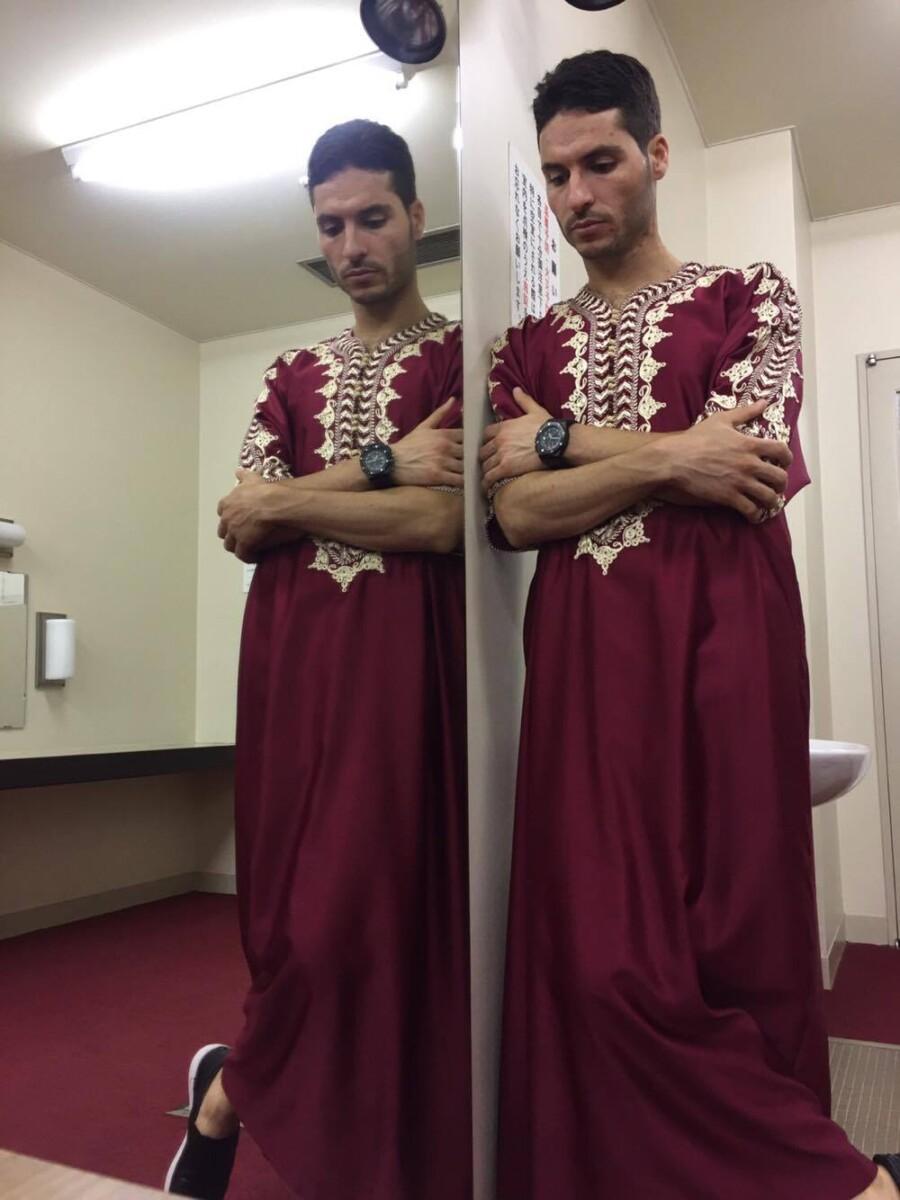
My story with the police woman
It was Friday the day I always go to Nagoya Mosque to pray. I put on my Moroccan long dress (one piece) as I sometimes do and headed to Nagoya. I had a class to do before I go to mosque, so I headed straight to school after I got off the train at Nagoya staion. As I was walking through the Golden Clock heading to school, a police woman noticed me and ran to me and asked for my indentity in a very wiered way. I really didn’t like that and I said “Do i look that suspesious to run to me that way?” “No you don’t i just wanted to ask for your identity” she replied. I stopped and picked out my wallet from my bag to show her my Residence card or my drivers licence but I was quite angry. I looked around and I saw some people around looking at me with the police woman especially because of the dress I was wearing which is always associated to a certain race and relegion. I said “Why did you stop me not the others around ? We are all foreigners after all. Is it because of my dress? It’s just a cloth and has nothing to do with who I am”, “I am sorry I just wanted to check your identity that’s all” she said. When she was done she bowed and said ” arigatou gozaimasu” but I just got my card back and disappeared without saying a word …..
いかがでしたか?
ヤシン先生が腹を立てた理由は、モロッコ衣装を身につけてモスクへ向かう途中、周りには他にも外国人がいたにもかかわらず、自分の元へ警察官が駆け寄ってきて身分証明書を求められたことです。
そして、「私自身」ではなく「宗教」で判断されてしまうことにショックを受けたそうです。
モロッコに一時帰国して受けた逆カルチャーショック。
Reverse culture shock
ヤシン先生が、母国モロッコにうきうきした気持ちで一時帰国したときに感じたカルチャーショックについてまとめています。
November 2010 is the month I first stepped in Japan, stayed for two months and got back to my country Morocco in January. I was really excited going back to the land where I was born, grew up, learned how to walk, talk and write with the chalk.
The land where I have my family, my friends, my school and everything.
But that huge excitement turned to a terrible shock once I stepped out of the airport in Casablanca. In the dark, dozens of taxi drivers voices came from all directions saying “hey Bro where are you going? I’ll take you wherever you want”.
That really freaked me out and I was really shocked at how scary, frustrating and frightening the place is. That was the first time I felt I don’t belong there. I still remember that evening as it was yesterday. I got a taxi, a bus, a taxi then another taxi to get home.
Everything was fine and completely safe. It actually was all about the way people do things. I found out that it’s was a question of how a Japanese taxi driver does his job and how a Moroccan one does his. I love the Japanese one though.
A question to those who lived abroad for a while and felt some kind of Re-culture shock when they were back in their home countries. Could you please tell us a bit about that experience? Thanks for reading!
By Yassine
いかがでしたか?
タイトルは、「逆カルチャーショック」
カルチャーショックの内容はわかりましたか?
モロッコの空港でた瞬間、タクシードライバーが大きな声で、どこ行くんだ?乗せてくよ!と押し寄せる感覚に、イライラと圧倒されてしまったそうです。
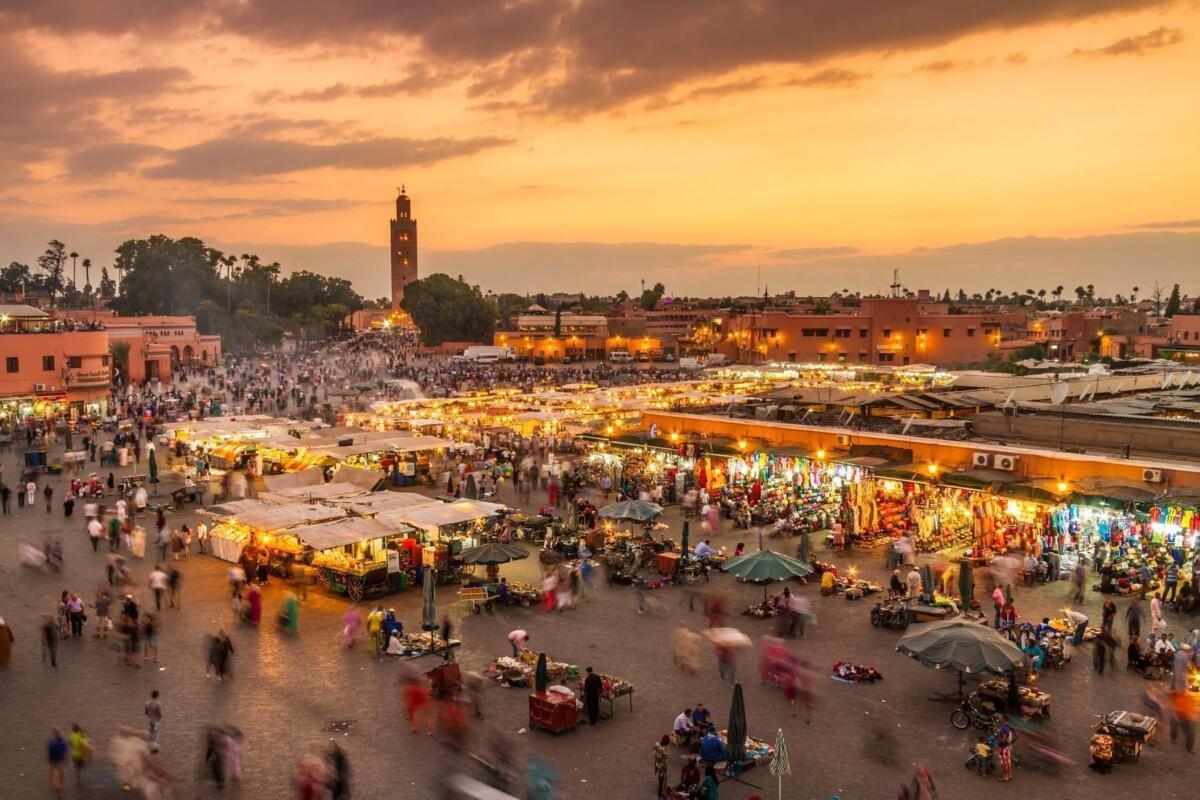
モロッコにはアーティスト達が刺激やひらめきを求め、魅了する風景がたくさんあります。
モロッコの、絵画を思わせるような風景は、今までに見たことがないものでしょう。
そんな風景は、刺激やひらめきを求めた観光客やアーティストたちを魅了してきました。
その美しさと土地の多様性からモロッコは人気の高い観光地となっています。
理由としては、その天候、燦々と輝く太陽、静かな海岸、高原、アトラス山脈にサハラ砂漠など。
今日は、息をのむような風景のひとつである、サハラ砂漠についてご紹介したいと思います。
サハラ砂漠
アトラス山脈の南部から、モロッコの景色ともいえるサハラ砂漠が広がります。
砂とヤシの木がその目印ともなっています。
モロッコ国内に広がっているサハラ砂漠は、Moroccan SaharaやSouthern provinceとも呼ばれています。
オアシス周辺には小さな町があり、ラクダに乗って観光するにはうってつけの場所です。
朝日や夕日を眺めながらラクダに乗って周遊できるアクティビティはとても人気で、保護されてきた伝統的なベルベル人の街を覗くこともできます。
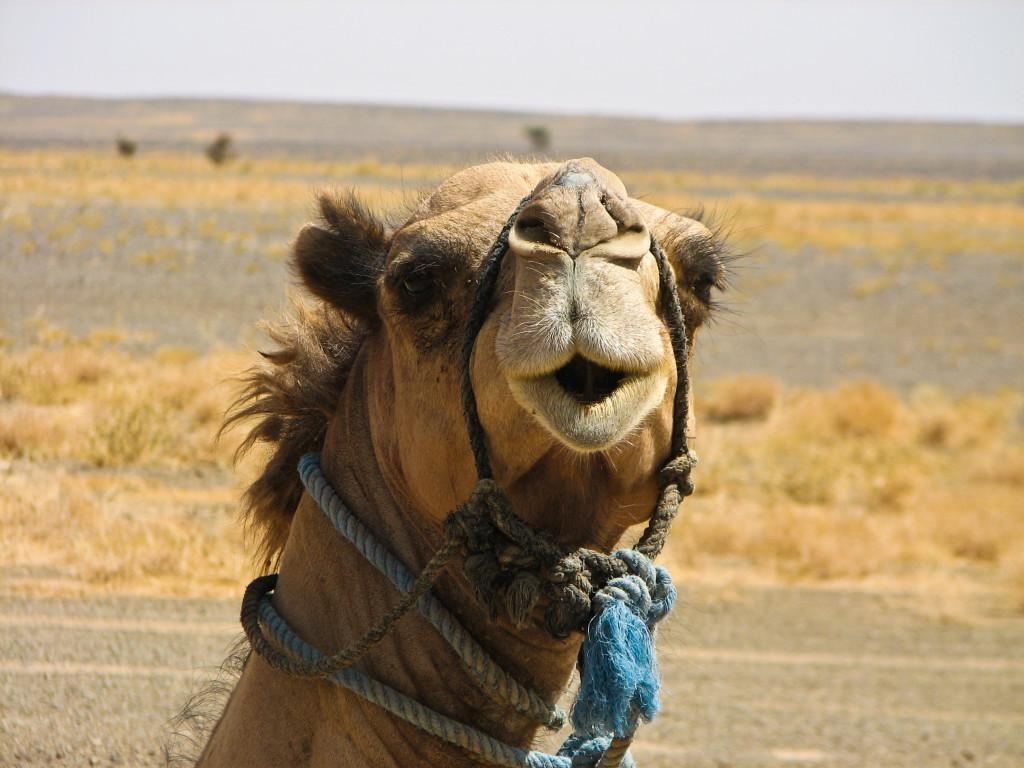
皆さんはモロッコについてどんなことを知っていますか?
行ったことはありますか?
どんなことを知っていて、どんな経験をしたのか、是非教えてくださいね!
原文はこちら↓
The beauty of Morocco
Morocco’s picture perfect landscape is something you have never seen before. It has been an inspiration for many, a tourist, an artist and soul seekers.
Morocco is a beautiful country and has such diversity in location that it is considered one of the best tourist locations. The climate, the sunshine, the serene coastline, the high plateau and the Atlas Mountains Sahara desert and so on.
In this article we are going to take a look on one of the most breathtaking landscapes which is The Sahara Desert
The Sahara Desert
South of the Atlas Mountains, the Sahara begins to impose itself on the Moroccan landscape. And sand and palm trees progressively become the norm.
The part of the Sahara desert that falls in Morocco is called as Moroccan Sahara or the Southern province. There are small towns around the oasis which can be a great location for those wanting to enjoy the camel excursion into the desert. The popular activities are sunrise and sunset camel rides over the sand dune, you can catch a glimpse of the tradition Berber villages there that have been beautifully preserved. What do you know about Morocco? Have you even been there? Please tell us what you know or tell us about your Moroccan experience.!
モロッコ料理は多国籍の文化のミックス?!
Moroccan Cuisine
Morocco possesses a diverse and lively history that witnessed a long succession of different ruling people such as the Romans, French, Spanish, Jews, Arabs and Berbers. This diversity is reflected through many aspects of Moroccan life, namely the languages, the clothing, The Cuisine, and the culture.
Moroccan Cuisine food is incredibly diverse and is a delight to nearly all the senses thanks to the country’s interaction with other cultures and nations over the centuries.
A classic Moroccan dish is The Tajine (or Tajine) – a slow-cooked stew made in an earthenware dish known by the same name. They are typically made with inexpensive cuts of meat that become tender with long cooking and are typically flavored with dried fruits, olives, preserved lemons, and spices. I love my mum’s honey chicken Tajine.
Moroccan Tajin
Couscous is considered a gift from Allah and is a staple of North African countries. It is the most common starch used to accompany dishes and is typically cooked with spices, vegetables, nuts and dried fruits. When prepared traditionally, fine semolina is rubbed with super fine semolina to coat until it resembles a grain. When steamed, it becomes light and fluffy.
Moroccan Couscous
The essence of Moroccan food is a communal style of eating, with many dishes shared by the family. Mealtimes are very social and eaten at a leisurely pace with much laughter and talking. Hospitality is a very important part of Moroccan culture and making guests welcome is also part of the Islamic teaching. Upon entering a Moroccan home, guests are typically offered food and tea within seconds.
モロッコ料理は、とっても種類が豊富で、長い歴史の中でうけた様々な多文化の影響を多大に受けている
モロッコ料理についてご紹介をします。
モロッコの歴史は、ローマ人、フランス人、スペイン人、ユダヤ人、アラブ人、ベルベル人の影響を受けています。
そのため、この多様性が、モロッコでの生活、言語、衣服、料理、文化に反映されているのです。
モロッコ料理は、とっても種類が豊富で、長い歴史の中でうけた様々な多文化の影響を多大に受けたことが垣間見えます。
伝統的なモロッコ料理の一つは、タジン鍋を使ってじっくりと煮込まれた料理、The Tajine(タジン)です。
たいてい、長時間煮込むと柔らかくなる肉とドライフルーツ、オリーブ、レモンの塩漬け、スパイスと一緒に煮込みます。
僕の一番のお気に入りはお母さんのハニーチキンタジン!
クスクスはアラー神からの授かりものと考えられている北アフリカの主食です。
でんぷん質の食べ物で、一般的には、スパイス、野菜、ナッツ、ドライフルーツと一緒に調理されます。
伝統的な方法で調理する場合は、上質なセモリナ(小麦の粗びき粉)を最高級のセモリナでこすり合わせ、その表面が穀物のように見えるようにコーティングします。
蒸されると軽くフワッとなるのです。
モロッコ料理で大事なポイントは、家族みんなで数々の料理をシェアして食べるそのスタイルでもあります。
食事の時間はみんなと話をする大切な時間で、ゆっくり時間をかけ、たくさん話して笑って過ごします。
おもてなしの心をとても大切にしているので、お客さんを歓迎することはイスラムの教えのひとつでもあります。
モロッコ家庭にお邪魔すると、すぐに食べ物やお茶が振る舞われます。
インドネシアでの交通機関 Transportation in Indonesia
Transportation in Indonesia
Hi everyone! I am Cindy and I am an English teacher in mmm.
I would like to show you some list of traditional and modern public transport in Indonesia.
Motorcycles are the most popular vehicle in Indonesia because they are cheap to buy, cheap to run and they negotiate traffic much better than cars. It is common to see families with three children to ride on a motorbike together.
-
Becak
You can see becak drivers taking children to school each morning, and taking women home from traditional market. Models of becak are different in each city. Big city like Jakarta limits becak because they cause traffic jams but you can still find it at the junctions of main roads and small streets. Negotiate your fare before you get in.
-
Bajaj

Bright orange and noisy vehicles became popular in India but later imported to and built in Indonesia. Similar to Tuk-Tuk in Thailand and MotoTaxi in Peru.
-
Kereta api (commuter train)
Train runs several times daily and a good transportation option to travel from major cities to the other. These trains are quite simple furnished and crowded and dirty, and often run late, but the fares are cheap. Different classes of service are available, with the first class is quite comfortable. Some trains are bookable in advance.
-
Minibus

They are known as Mikrolet, angkot or Sudako. They are used for local transport around cities and towns. Most minibuses picking up and dropping off people and goods anywhere along the way. Drivers may try to overcharge foreigners and ask you for triple the normal fare so it’s best to ask somebody about the normal price.
-
Ojek

They are motorcycle taxis and ojek drivers should have spare helmets for you to wear. They take passengers around the town and go where no other public transport exists. There is a new service called Go-jek that allows you to order an Ojek from your phone and order to pick up a meal from a restaurant or deliver goods and documents which is very convenience.
-
Delman (horse-drawn carriages)
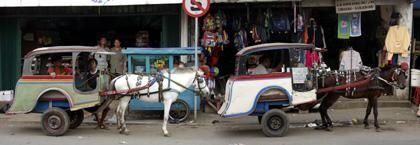
Delman is getting harder to spot in Jakarta. They are most commonly used to transport goods from major outlying markets. On Sundays, you can rent a delman around Monas, the national monument in Jakarta.
私はいくつかのインドネシアの新旧の公共交通機関を紹介したいです。日本はインドネシアより公共交通がかなり便利で、きれいだと思います。
バイクは車より、購入する値段も安いし、走りやすいし、機敏に動けるから、インドネシアで一番人気な乗り物です。3人の子供を持つ家族が一緒にバイクに乗るのをよく見かけます。
1.べチャ
毎朝学校にべチャで通っている子供、そして市場からべチャで帰って来る女性を見ることができます。また、ベチャの形は各都市で異なります。しかし、交通渋滞の原因となるので、ジャカルタのような大都市でべチャは制限されいますが、大通りの交差点や狭い通りで見つけることができます。べチャを乗る前に、料金を交渉する必要があります。
2.バジャイ
明るいオレンジ色で、騒がしい乗り物です。インドで人気となりましたが、インドネシアに輸出され、作られました。タイのトゥクトゥクやペルーのモ―タータクシーに似ています。
3.ケレタ アピ (通勤電車)
電車は毎日に5-6回ぐらい走り、大都市を結ぶ便利な交通機関です。これらの電車は、非常に簡単な作りで、混んでいて清潔ではなくよく遅れますが、料金は安いです。お金を出せば、乗り心地の良い一等車もあります。中には事前に予約できる列車もあります。
4.ミニバス
インドネシアではミクロレット、アンコット、スダコと呼ばれています。これらは地方都市の交通機関として利用されています。ほとんどのミニバスは路線上のどこでも、人と荷物の乗り降りに応じています。運転手たちは外国人に対して、通常の料金の3倍ぐらいを要求する可能性がありますので、先に通常の料金を調べておくといいです。
5.オジェック( バイクのタクシー)
オジェックの運転者たちはお客様のためにヘルメットを持っているはずです。彼らは公共交通があまりない場所へ乗客を連れて行きます。また、商品やドキュメントを配達したり、レストランへ注文された食べ物を取りに行ったりします。それは携帯電話からオジェックを予約することができ、とても便利なゴージェという新しいサービスです。
6.馬車
馬車はジャカルタでなかなか見れないです。一般的に、都市から離れている市場から商品を運ぶため、使用されています。日曜日に、ジャカルタにあるモナス、国家記念碑、の周りで馬車を借りることができます。

My first step in Japan.
Honeymoon stage:
As almost every foreigner in Japan The first few years In Japan are often referred to as the “Honeymoon Period”, The stage where I’ve just arrived in Japan, it was an awesome, it seemed like life is a party, everything is so exciting, everyone is so nice, so polite, so clean, well-dressed, the society is modern, urban, educated and honest…
It’s just so exciting because everything is new and my eyes are opened to a new and different way of life…
So what were some of the most exciting moments in Japan ? What amazed the most about Japan? These are questions to be answered next time … To be continued.
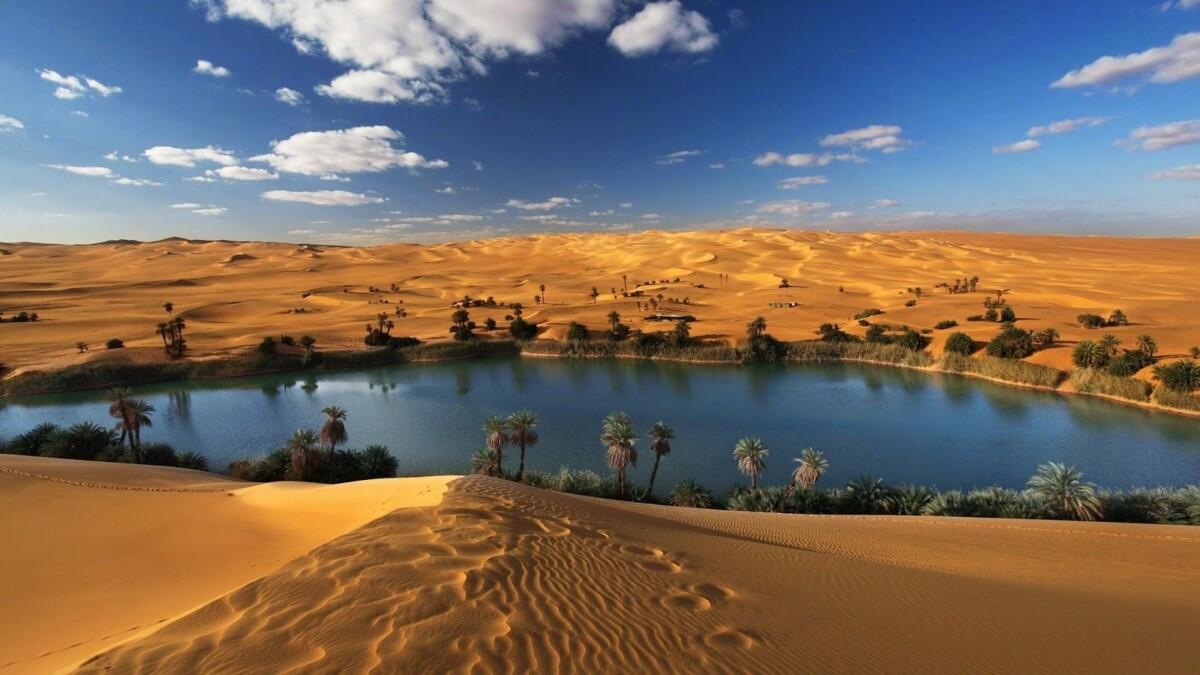
モロッコから来日してから日本にいるということを実感する3つのこと
Disappointment.
Hi I’m Yassine from Morocco. Here is the second stage of my life living in Japan.
The honeymoon stage starts to disappear little by little and disopointment comes out then you start asking yourself “was I wrong?” “Isn’t Japan like what I thought?”.
This is the stage where you find out that things are quite different from what you got as a first impression when you first stepped in this country.
In this stage you get a feeling like it’s not the way it seemed to be in the first stage, a stage of exciement and joy.
You start observing things from a different angle, and then you get different interpretations, completly different from what you understood at the first stage.
And then comes the stage of “CRITISISM” Can you guess what foreigners critisise about Japan?
I Can’t wait to see what your opinions are!!!!! See you next month!
Enlightenment
ある「Enlightenment」(悟り、気づき)により以前より快適に異国の日本で過ごせるようになったそうです。
さて、Yassine先生は、どんな「Enlightenment」(悟り、気づき)があったでしょうか?
The last stage :Enlightenment
The stage is where you understand that Japan is just like any other country, learn to accept strength and weakness and cope with them.
The stage where harsh criticism melts down and you start accepting things the way they are and live your life the way you want -with the minimum influence possible caused by the annoying side of the environment where you live-;
As I stated in the previous stage , some of the reasons for all of this criticism and annoyance are the language barrier and the extreme cultural deference, so the person starts living more comfortably when he/she gets over the language barrier and learns more about the new culture.
In the stage you feel your mind is at peace and think that you could live in Japan forever without any Drama. But the Criticizing Damon is always there but not as furious as it was in the Criticizing stage.
Have/has you or a friend of yours, a member of your family, or whoever you know ever lived abroad?
If so, feel free to share with us your/their experience in the comments.
Thanks for reading.
See ya.
by Yassine
Criticism
英語課のYassineが、日本に来日してから実感していることをシリーズに伝えています。
第3弾は「Criticism」
今回は、「日本人の働き方」についてYassine先生が、来日してからどう感じでいるか?を記まとめています。ちなみにストレスという言葉は日本に来て知ったそうです。
ぜひ!英文読解に挑戦してみてください。
Hello Everyone.
I’m Yassine! I’m back again.
How have you been?
Do you remember the disappointment I talked about in the last article?
The stage today is Criticism as I’ve told you last time.
Well, here we go. The first thing a foreigner criticizes about Japan is the working system. Does it really make sense ? Do Japanese people work that hard because they really love their jobs as
we’ve heard? I personally (as many foreigners actually do) don’t believe that because there are fact that say completely the opposite, with a few exceptions of course.
Do you know I had never heard of something called “STRESS” before I came to japan? Why do Japanese people need to push themselves that hard and stress themselves out?
Why do Japanese people have to make a big deal over using chopsticks or my Japanese language skills ? This happens even if you’ve lived in japan for decades.
Why does the cashier have to talk to my Japanese friend wife or whoever even if I’m the one who’s buying? The cashier just ignores me and talks to the person behind me lol Does that make sense?
That doesn’t disgrade Japanese people in anyway and doesn’t mean foreingers are perfect.
Well those were some random questions. I think it’s enough to keep it short. Feel free to write your responses, opinions and personal points of view in comments. I’d be glad to read all of them.
Thank you and see you next time!


